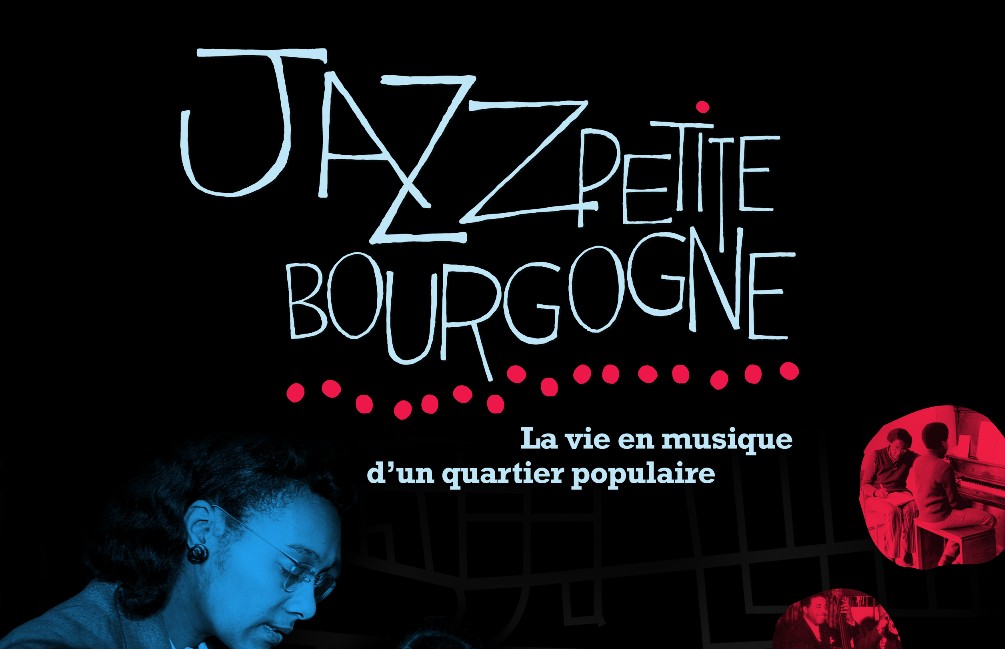Cet été, Radio-Canada a lancé un documentaire en ligne sur l’histoire du jazz dans le quartier Petite-Bourgogne de Montréal. De nombreuses pistes pédagogiques sur le sujet sont à explorer, au carrefour de l’alphabétisation numérique et médiatique.
Si le Festival de jazz de Montréal est considéré comme l’un des plus importants au monde, la notoriété de cette ville comme phare du jazz date d’avant 1980. Plus particulièrement, c’est dans le quartier Petite Bourgogne que de fameux musiciens tels Oscar Peterson, Oliver Jones, les Frères Sealy, Nelson Symonds, Charlie Biddle, ou Louis Metcalf ont vécu ou sont venus jouer.
C’est pour mettre cet héritage en valeur que le documentaire numérique Jazz, Petite Bourgogne a été créé. Le guide pédagogique interdisciplinaire qui l’accompagne propose des activités qui mènent les élèves au carrefour de l’alphabétisation numérique et médiatique, leur permet de décoder des médias de manière critique ainsi que d’être des créateurs de contenu médiatique.
Le documentaire complet comprend :
- une application iPhone gratuite qui présente quatre circuits pédestres dans la Petite Bourgogne, pour une expérience sonore tridimensionnelle;
- un livre numérique qu’on peut télécharger dans l’iBook Store (9,99 $), dans lequel des photos d’un objet d’époque racontent de fascinantes histoires;
- un guide pédagogique de 5 unités qui s’adresse particulièrement aux enseignants du secondaire et est disponible gratuitement;
- un documentaire Web.
Tous ne sont pas montréalais et la plupart ne pourront pas participer aux circuits terrestres proposés pour découvrir de visu ce quartier et son histoire. Cependant l’ensemble éducatif Jazz, Petite-Bourgogne peut enrichir le contenu de plusieurs leçons. Le contexte est principalement interdisciplinaire, centré sur la pédagogie de projet et l’usage actif, intelligent et créatif des technologies numériques disponibles dans la plupart des écoles. Il est difficile de choisir quel sujet d’étude est privilégié par l’usage de cet ensemble éducatif. La musique est évidemment au centre du projet. Cependant, l’étude de l’environnement social qui a mené à cette explosion de création musicale, l’évolution de ce quartier, la valorisation de communautés marginales propose un riche potentiel d’apprentissages qui dépassent largement la culture musicale.
Contenu du guide pédagogique
Ce guide propose cinq unités d’apprentissage et trois feuilles de références :
- Unité I – Une chanson en tête – Hymn to Freedom d’Oscar Peterson présente l’histoire des Noirs au Canada et permet d’apprendre aux élèves à utiliser les données historiques numériques.
- Unité II – Second regard – La Petite-Bourgogne. La photographie documentaire sera utilisée dans une démarche d’apprentissage par investigation.
- Unité III – La Petite-Bourgogne réimaginée décrit le tissu urbain de ce vibrant quartier entre 1920 et 1955, l’évolution urbaine dans la Petite-Bourgogne et offre aux élèves la possibilité d’être citoyens urbanistes amateurs en réimaginant ce quartier. Ils pourraient par ailleurs transposer ce projet à leur propre quartier ou village et peut-être même soumettre leurs propositions à l’assemblée des élus locaux.
- Unité IV – Labo Jazz – Le jazz au service au cinéma encourage les élèves à réfléchir à l’importance de la musique comme trame sonore d’un document visuel et introduit les compositeurs de Jazz Petite-Bourgogne. C’est le temps d’explorer des applications comme iMovie et Garage Band et faire des montages avec diverses trames sonores.
- Unité V – Griots, Jazz et Hip-Hop
La feuille de référence 1 guide l’enseignant qui souhaite effectuer une sortie avec ses élèves dans la Petite-Bourgogne pour l’utilisation optimale de l’application iPhone/iPad Jazz Petite-Bourgogne.
La feuille de référence 2 est une introduction à divers outils numériques pratiques, pour l’enregistrement de la musique et du son, la production de vidéos et l’animation numérique, les photos numériques, la cartographie numérique, la création de site Web et les outils de création de contenu.
La feuille de référence 3 présente un intéressant lexique de plusieurs termes liés soit au contexte historique, au contexte musical, au contexte urbaniste ou au contexte numérique.
Dans l’aperçu de chaque unité se trouve un survol des leçons, des objectifs, des connaissances et des compétences à maîtriser au préalable, une suggestion d’échéancier et une explication sommaire des possibilités d’intégration technologique.
Comment l’exploiter en classe
C’est en regardant les quatorze capsules d’une durée d’environ quatre minutes chacune que je recommande aux enseignants d’aborder cet ensemble éducatif. Tout en musique, en témoignages et en images, le documentaire vous sensibilisera personnellement suffisamment au contexte de vie de cette époque et de ce milieu pour vous permettre d’exploiter avec intelligence le guide pédagogique interdisciplinaire dont l’approche pédagogique favorise l’apprentissage par projet.
À explorer :
- L’importance historique de la chanson L’hymne à la liberté d’Oscar Peterson, qui est devenu l’hymne du mouvement pour les droits civils des années 1960. Outre la sensibilisation des élèves à cet important mouvement social du siècle dernier on peut aussi comparer ce mouvement à la Révolution tranquille au Québec.
- L’alphabétisation médiatique est une compétence primordiale à développer chez les élèves. Le guide pédagogique propose de créer et publier les résultats de recherches.
- Interpréter les lieux historiques et leur histoire par la photographie. Une telle compétence sera facilement transférée et utilisée pour l’étude de l’histoire de divers milieux.
- L’urbanisme dynamique de nos villes. Quels rôles positif et/ou négatif jouent les projets de revitalisation urbaine? La plupart des villes québécoises ont été et sont touchées par le déclin et la revitalisation urbains. À l’aide d’un logiciel de création de cartes, les élèves pourraient faire une étude de leur quartier et cartographier l’histoire de leur vie avec l’application Zeemaps, par exemple.
Enfin, plusieurs activités peuvent être réalisées dans le cadre du Mois de l’histoire des Noirs, qui est célébré en février chaque année.
Ceci ne sont quelques une des nombreuses possibilités pédagogiques de cet ensemble. À vous d’en découvrir toute la richesse!






